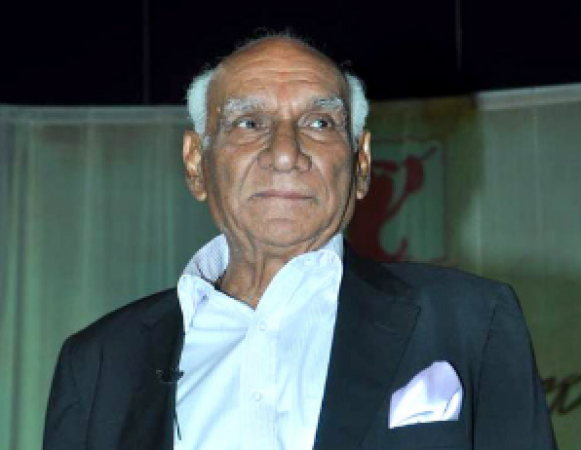
The Indian film industry experienced a significant period in the 1970s, which was marked by the emergence of fresh cinematic trends and the reimagining of narrative strategies. The renowned producer and director Yash Chopra was a visionary during this time of change, giving Indian cinema a new perspective by switching the settings of his films from the picturesque Kashmiri mountains to the enthralling Swiss Alps. This daring move not only changed the way romantic movies looked, but it also gave Chopra's work a unique place in Bollywood history.
Yash Chopra, who was already well-known for his filmmaking endeavors, went through a crucial period in the late 1960s. After helming several lucrative films in the past, Chopra's creative instincts started to change. He took a risky action that would ultimately alter the face of Indian cinema out of a desire to innovate and explore new horizons. The lush Kashmiri valleys that had served as the setting for his earlier movies no longer held the uncharted territory he sought. This served as the starting point of his journey to Europe's Alpine regions.
Romantic plotlines, uplifting music scores, and breathtaking scenery were frequent characteristics of Yash Chopra's movies. The change he made to the Alpine region, however, gave his filmmaking a fresh dimension of grandeur and depth. The majestic snow-covered mountains in the background of his films gave viewers a sense of fantasy and escape. A striking contrast between the intense love stories and the unspoiled, breathtaking natural beauty was created, and it deeply affected the viewers.
Both skepticism and curiosity were expressed in response to Chopra's choice to set his movies in the Alpine region. His unwavering vision, however, allowed him to turn skepticism into admiration with movies like "Kabhie Kabhie" (1976) and "Silsila" (1981). These movies showed audiences how to break away from traditional settings and introduced them to a different kind of romance—one that was grand, aspirational, and timeless. The protagonists' feelings and course were affected by the Alps, which took on the role of a character in and of themselves.
Yash Chopra was able to weave his tales of love and longing on the backdrop of the Alpine landscapes. His narrative incorporated the snow-capped mountains, tranquil lakes, and quaint villages as essential elements that complemented the feelings of his characters. By meticulously capturing the essence of the Alps, cinematographer Ravi K. Chandran gave the movies an ethereal quality. A sensory experience that went beyond the ordinary was created by the visual aesthetics and the soul-stirring melodies written by luminaries like Laxmikant-Pyarelal and Khayyam.
The choice by Yash Chopra to shoot in the Alpine region involved more than just a change in location; it also involved a cultural transition. The inclusion of Indian characters in scenes set in European settings acted as a link between the two opposing cultures. Collaboration between Indian and foreign talents enhanced this exchange even more. International actors shared the spotlight with well-known Indian actors like Amitabh Bachchan, Rakhee Gulzar, and Rekha. Chopra's movies gained a global flair thanks to this fusion of talent and cultures, expanding their appeal beyond the domestic market.
A lasting impression of Bollywood was left by Yash Chopra's cinematic journey through the Alpine landscapes. The term "Yash Chopra romance" has come to represent grandeur, feeling, and enduring beauty. He pushed the limits of visual storytelling with his films, which established new standards for romantic narrative. The evolution of Indian cinema was influenced by his work, which encouraged directors to explore unusual locations and try out new narrative techniques.
Romance in Indian cinema was redefined in the 1970s by Yash Chopra, who set out on a cinematic odyssey. His imaginative storytelling was on full display when he chose to switch from the well-known Kashmiri landscapes to the alluring Alpine setting. The visual aesthetics of his films were improved by this change, which also facilitated cross-cultural dialogue and global cooperation. The legacy of Yash Chopra continues to motivate filmmakers to challenge preconceived notions, venture into uncharted territory, and produce works of art that are universally relatable.
Amitabh Bachchan's Vanity Van Journey in Bollywood